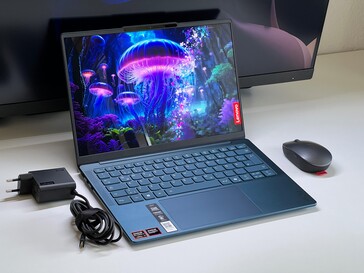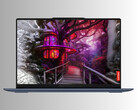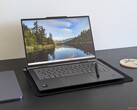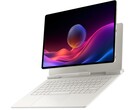Lenovo has significantly improved the display quality of its current models. The current 2.8K OLED panel with 120 nits and a peak brightness of over 1,000 nits is currently one of the best displays on the market. The SDR brightness is just under 500 nits, which isn't outstanding, but still better than current OLEDs from Samsung. Accurate color profiles for sRGB and P3 are included ex works, the image quality is excellent, and the PWM frequency is very high (along with a low amplitude); only the strong reflections can be annoying. Unsurprisingly, Lenovo is using the new screens in several series, and we've already been able to test several models, most recently the current Yoga Slim 7 14 G10.
The Yoga Slim 7's other technical specs are also impressive. Its AMD Ryzen AI 7 350 (Krackan Point) processor delivers good performance, its 32 GB RAM and 1 TB SSD provide ample storage, and the rest of the features are perfectly adequate (USB 4.0, Wi-Fi 7, Copilot+).
There are, however, issues with the chassis. The thinner design compared to the Yoga Pro 7 14 does not affect the good keyboard (1.5 mm travel), but the quality of the housing itself is not particularly good. The screen lid in particular creaks noticeably with every movement and the base unit also makes slight creaking noises. In everyday use, you'll encounter this every time you open the display or adjust the opening angle. It feels extremely cheap and shouldn't happen from a major manufacturer like Lenovo.
All further information on the new Yoga Slim 7 14 G10, including extensive benchmarks and measured values, can be found in our detailed review.























